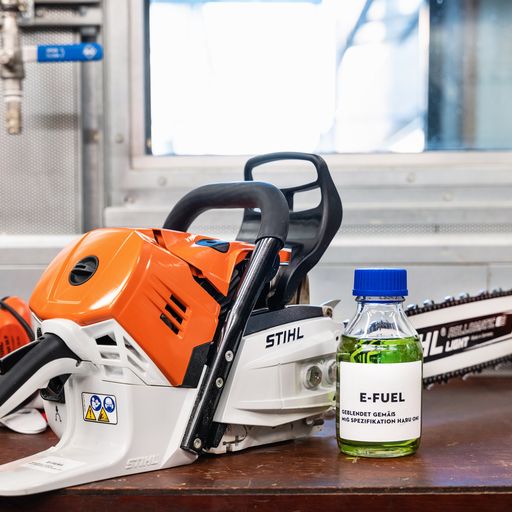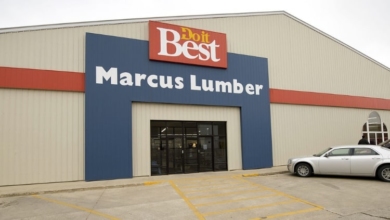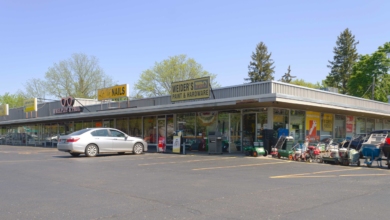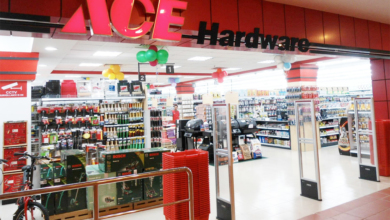STIHL Sets Revenue Record and Focuses on Dual Technological Leadership

The STIHL Group finished the challenging fiscal year 2022 with record-breaking revenue of 5.5 billion euros, equating to growth of 8.6 percent compared to the previous year. As an international business, the company generated 90 percent of its revenue outside its domestic market of Germany. The rise was attributable in particular to currency effects, inflation-related price adjustments and stronger demand for higher-price professional products. As of Dec. 31, 2022, the STIHL Group employed 20,552 people, an increase of 2.3 percent year on year.
Michael Traub, chairman of the executive board of STIHL, said, “Our sales remained high in fiscal year 2022. However, we recorded a slight decline in demand compared to the high growth in previous years. That’s because 2022 was heavily influenced by economic and geopolitical challenges, such as disrupted supply chains, material shortages, war in Ukraine, the energy crisis and inflation — something we also felt in terms of business performance.”
Sales growth was slowed by a variety of factors, including weak economic performance in U.S. and western European core markets, declining purchasing power and a more marked shift in consumer spending to other areas of life (such as travel and eating out) as a result of eased Covid restrictions.

Although the trend toward battery-operated products remained intact, the STIHL Group saw a slight decline in the gasoline-powered segment. “The shift from gasoline to battery power is in full swing. STIHL is actively shaping this transformation by focusing on dual technological leadership. We are consistently and systematically making massive investments in battery technology while continuing to fully support the sustainable and environmentally friendly advancement of our gasoline-powered products,” said Traub.
Changed consumer behavior, drought and supply bottlenecks slow sales development
The end of most Covid-related restrictions also weakened the “cocooning effect,” a trend that involves people staying at home and pursuing interests such as gardening and home improvement. Instead, consumers spent more money on travel, culture and eating out, which impacted global sales development at STIHL as well. Effects such as weak economic growth, inflation and the energy crisis additionally fueled restraint among consumers.
To improve its ability to supply products and increase production capacities, STIHL invested 404 million euros in its global production, distribution and logistics sites.
STIHL market development at a glance:
• In its domestic market of Germany, STIHL generated sales growth and revenue of over 500 million euros in 2022. Demand was high among professional users of forestry, construction, horticulture, and landscaping, as well as among private customers. STIHL stopped supplying STIHL power tools to Russia and Belarus immediately after the start of the war.
• In North America, battery-operated products continued to gain traction. While demand for battery-operated tools rose, sales of gasoline-powered tools fell slightly.
STIHL aims for 80 percent battery-operated products by 2035
Battery-powered products represent the fastest-growing market segment for STIHL. Today the STIHL product range includes more than 80 battery-operated tools for private consumers and professionals, which account for 20 percent of the STIHL tools sold worldwide. By 2027, STIHL plans to increase this share to at least 35 percent, with a goal of 80 percent for 2035.
“The aim is for STIHL to take on a leading position at the head of the battery-operated market,” Traub says. “To this end, our top priority in terms of investment lies in the development and production of innovative and powerful battery-operated products.”
The key building blocks of advancing STIHL battery technology are green electricity, durable higher-performance batteries and chargers, and high-efficiency electric engines. STIHL battery-operated products are currently manufactured at the STIHL locations in Austria and the United States.
From 2024 on, STIHL will also start making battery-operated products at the site of the founding company in Waiblingen, Germany, and at its new production site in Oradea, Romania. Aside from battery technology, STIHL is also investing in the advancement of combustion engines, particularly in terms of their sustainability.
Traub explains the strategy: “We are consciously focusing on dual technological leadership. That’s because we align our actions systematically with the needs of our customers. Battery-powered tools are the future. At the same time, there are still many applications and regions of the world that require products powered by combustion engines. For those customers, we are developing visionary and environmentally friendly solutions.”
To do so, STIHL is focusing on biofuels and e-fuels. With MotoMix Eco, which the company developed in-house, STIHL has already launched a fuel containing 10 percent renewable raw materials, such as wood scraps from forestry and non-edible parts of plants. Compared with STIHL MotoMix, a conventional specialty fuel for two-stroke engines, MotoMix Eco helps reduce carbon emissions by at least 8 percent.
Now STIHL is taking things a step further with e-fuels, synthetic fuels produced from green hydrogen and carbon dioxide (CO2) using wind energy that are virtually carbon-neutral. Because STIHL products are already e-fuel ready today, all STIHL tools with a combustion engine can be powered with these alternative, environmentally friendly fuels without technical alterations.
Thanks to e-fuels, even 10- or 20-year-old chainsaws, as well as all other STIHL power tools, can be operated with virtually no carbon emissions. The reduction in carbon emissions from the use of products with a combustion engine has an immediate effect, without customers having to invest in new products. STIHL plans to achieve the widespread use of e-fuels in its tools starting in 2027.
One flagship project, which is set to open officially in July 2023, is the STIHL Brand World at the founding company’s headquarters in Waiblingen.
“The STIHL Brand World goes well beyond being a mere museum to bring the STIHL brand to life. We will also provide a comprehensive knowledge platform about forests, a topic that is near and dear to our hearts not only because the roots of STIHL lie in forestry, but also because nature is the foundation on which we live and work. That’s why it plays a very important role in our sustainability strategy,” said Traub. As a result, visitors to the STIHL Brand World will be able to learn all about topics such as the forest ecosystem, old-growth forests or sustainable forestry.
STIHL product innovations for professional users and consumers
In addition to a new generation of the iMOW robotic mower and a variety of battery-operated breakthroughs, STIHL presented new gasoline-powered products at the press conference. “Our new products underscore our aim to be a technological leader on two different fronts,” Traub says.
The new generation of STIHL iMOW robotic mowers will be available just in time for the upcoming gardening season. Featuring powerful lithium-ion batteries along with intelligent operation and charging options, the six new mowers can be intuitively operated using the updated MY iMOW app and are designed for lawns of up to 5,000 square meters. The STIHL AP battery power system, which features 36-volt lithium-ion battery technology engineered for professional-grade demands, has grown and now includes roughly 40 tools.










